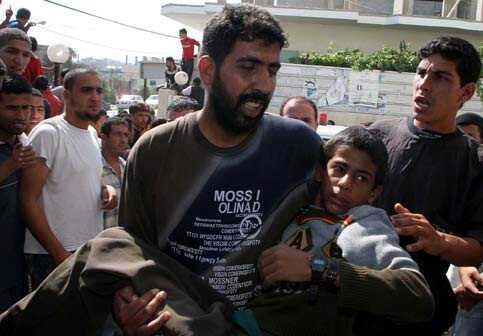UN Office for the Coordination of Humanitarian Affairs 7 August 2006

A wounded Palestinian arrives to a hospital in Rafah after an Israeli air strike on the refugee camp in the southern Gaza Strip, 3 August 2006. (MaanImages/Hatem Omar)
The following information appeared in the report entitled “Gaza Strip Situation Report - 7 August 2006
The UN warns of “a sharp decline” in the humanitarian situation confronting 1.4 million Gazans as ‘Operation Summer Rains’ enters its sixth week. [1]
Key developments since the last Situation Report on 27 July: [2]
Developments in detail:
Military operations
Crossing points and humanitarian access
Electricity
Water and sanitation
Fuel
Health
Food
Shelter and land
Coordination
Related Links
Footnotes
[1] Statement on Gaza by United Nations Humanitarian Agencies working in the occupied Palestinian territory, 3 August 2006, available at www.ochaopt.org.
[2] This is the ninth Situation Report issued by OCHA since June 2006. The previous reports were published on 21, 27, 30 of June and 4, 6, 12, 18 and 27 July.